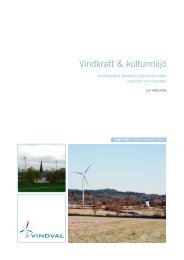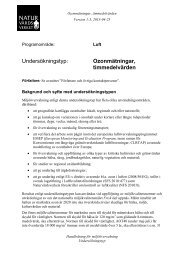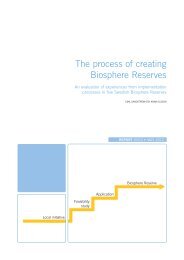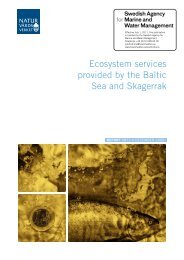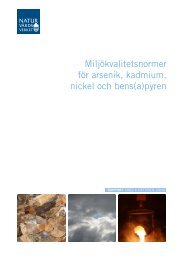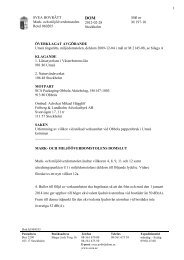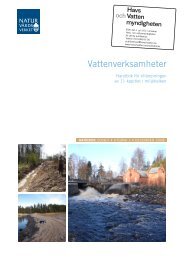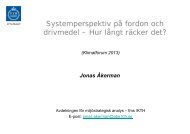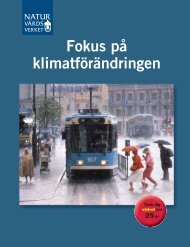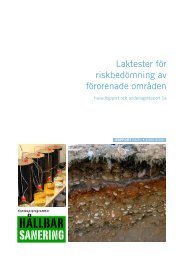pdf 4,3 MB - Naturvårdsverket
pdf 4,3 MB - Naturvårdsverket
pdf 4,3 MB - Naturvårdsverket
Create successful ePaper yourself
Turn your PDF publications into a flip-book with our unique Google optimized e-Paper software.
HÅLLBAR SANERING<br />
Rapport 5663 - Klorerade lösningsmedel<br />
technologies. Ex situ treatment of the removed contaminants is necessary. The in<br />
situ technologies include:<br />
• Air sparging, where volatile contaminants are stripped from the saturated<br />
zone by air injection<br />
• Soil vapor extraction, where volatile contaminants are extracted from the<br />
vadose zone by application of vacuum<br />
• Multi-phase extraction, which is a combination of soil vapor extraction<br />
and pump and treat, where contaminants are removed from the subsurface<br />
by high vacuum<br />
• In situ flushing, where contaminants are mobilized or dissolved by water<br />
flushing in some cases amended with co-solvents or surfactants<br />
• In situ thermal treatment, that use heat (steam or electric heating) to<br />
facilitate contaminant removal<br />
Physical mass reduction is usually applied for source area remediation. Air<br />
sparging, soil vapor extraction, multi-phase extraction and in situ thermal treatment<br />
based on steam enhanced extraction are mature technologies, while in situ flushing<br />
and in situ thermal treatment based on electrical heating are emerging and, at<br />
present, not used commonly at full scale.<br />
A number of technologies can be applied for in situ destruction of chlorinated<br />
solvents. These technologies generally address contaminants in the saturated zone.<br />
The main technologies are:<br />
• Enhanced in situ bioremediation, that uses either naturally occurring or<br />
introduced microorganisms to degrade target contaminants, often in<br />
combination with the addition of appropriate substrates to enhance the<br />
degradation rate. In most cases anaerobic dechlorination is applied for<br />
chlorinated solvents treatment<br />
• In situ chemical oxidation, that uses oxidants (permanganate, persulfate,<br />
ozone or Fentons reagent) to destroy target contaminants<br />
• In situ metal catalyzed reduction, which uses zero valent iron (granular or<br />
nano- and microscale powder) to catalyze biotic and abiotic degradation<br />
• Phytoremediation, that uses plants to remove and accumulate or destroy<br />
the contaminants<br />
• Monitored natural attenuation, which is a form of long-term monitoring<br />
that is used to document and quantify natural degradation processes<br />
In situ chemical oxidation and in situ metal catalyzed reduction with nano- and<br />
microscale powder are generally used for source area treatment, while the other in<br />
situ destruction technologies are used for plume remediation. However, the use of<br />
enhanced in situ bioremediation for source area treatment is growing. In situ metal<br />
catalyzed reduction with nano- and microscale powder is an emerging technology.<br />
Also phytoremediation is an emerging technology with limited field applications<br />
for chlorinated solvents. The other technologies are mature.<br />
15



